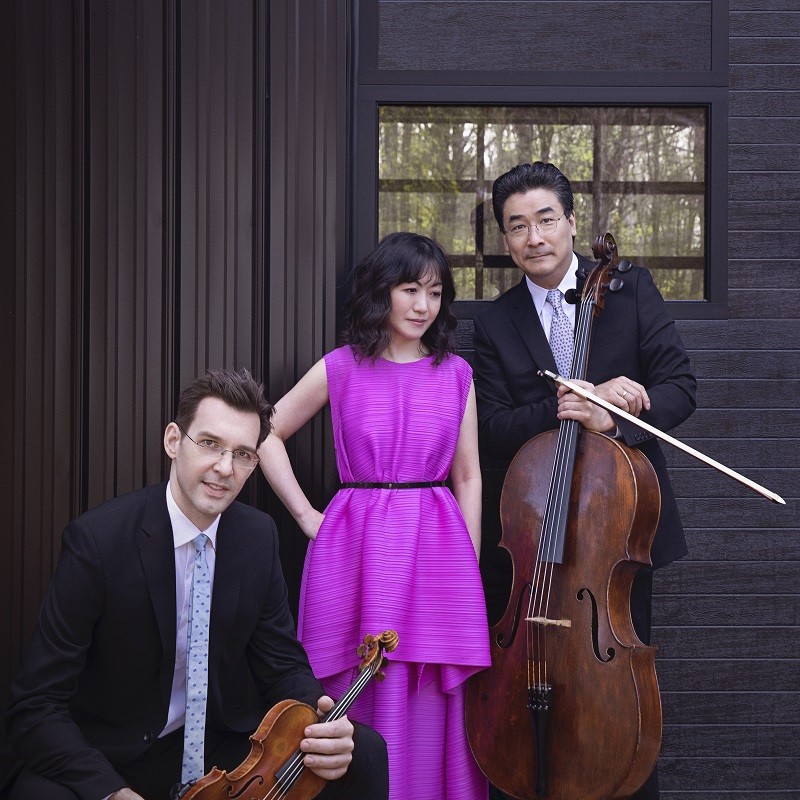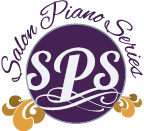Horszowski Piano Trio | Saturday, April 5, 2025 · 7:30pm | Salon Piano Series | Concert in Madison, WI

Photo Credit: Lisa Marie Mazzucco
Horszowski Piano Trio
Saturday, April 5, 2025 · 7:30pm
Program included: Clarke, Harbison, Schubert
Described as “the most compelling American group to come on the scene” (The New Yorker), the Horszowski PianoTrio’s performances are “lithe, persuasive” (The New York Times), “eloquent and enthralling” (The Boston Globe).
Program
Rebecca Clarke: Trio
John Harbison: Trio #2 “Short Stories”
Franz Schubert: Trio #2
Masterclass
Concert Review
“It’s been too long since we heard Schubert here,” said Tim Farley, as he introduced the spectacular string trio named after famed educator Mieczyslaw Horszowski (pronounced hor-shof-ski).
The April 5 Salon concert included Schubert’s 1827 Trio No 2 in E-flat major, a grand piece lasting three quarters of an hour and traversing all conceivable moods. Violinist Jesse Mills announced that this performance would include important passages that had been edited out of some versions. “This piece is epic,” he said. “Let the music just wash over you.”
Schubert composed it at age 31, the year of his death. It was among the few of his late compositions he heard performed. As the Trio evolved through its four symphonic movements, harmonies shifted from major to minor, meters moved from ¾ to 4/4, dynamics swelled and diminished. Rieko Aizawa’s piano provided commentary to the violin and cello statements, then took command to introduce dramatic passages.
As with any string trio, it was great fun to watch the interplay among violinist Jesse Mills, cellist Ole Akahoshi, and pianist Aizawa. Although seated, they swayed and nearly danced as they navigated the very demanding music of Schubert, Rebecca Clarke, and John Harbison.
British composer Rebecca Clarke had the usual disadvantage of female composers of her time: underappreciated, not encouraged, and dismissed as not quite worthy. Violinist Jesse Mills introduced her 1921 “Trio” as not only having stood the test of time, but also as having risen to the top ranks of the trio literature.
The piece gets really wild. Yet Clarke’s frequent discordant statements and sometimes alienated mood are complemented by her love of pastel colors and sensitive string writing.
Over the course of its three movements the piece suggests Faure’s colorist textures, Hebrew melodies, folk dances, and medieval chant. The opening moderato movement sounds strikingly modern, its dark statements and percussive effects suggesting Shostakovich and Stravinsky. Reiko Aizawa’s piano sprinkled out crisply, like wind chimes and icicles.
Pianist Aizawa announced that she has been a long time fan of composer John Harbison and had the joy of premiering his 2003 commission, Trio No. 2: Short Stories. “His work is so poetic, she said, “and so much imagination.”
Harbison has written, “I could populate many pieces with the music which did not become part of Trio No. 2.” This listener found the work quite challenging: at times harsh and violent, it often sounded disoriented and gasping. Tonal centers were ambiguous. Complex rhythmic patterns overlay each other, with the piano and strings piling on each other like NFL linebackers.
The trio’s final Enigma movement modulated from a plaintive melody into an eerie searching theme perfect for a Frankenstein film. Toward the end, Harbison’s score
requires the pianist to place a sheet of paper on the piano strings, turning the instrument into a buzzing percussion instrument, which combats forceful pizzicato playing by the violin and cello.
–Paul Baker
Concert Review
The superbly performed concert by the Internationally known Horszowski Trio on the Salon Piano Series at Madison’s Farley’s House of Pianos both deeply engrossed and excited its almost capacity audience of Saturday, April 5, 2025. Pianist Rieko Aizawa, violinist Jesse Mills and cellist Ole Akahoshi skillfully and expressively interacted to create cohesive interpretations of a thoroughly satisfying program of contrasting trios by Rebecca Clarke, John Harbison and Franz Schubert.
For this writer, it was a real treat to hear the opening work, Clarke’s skillfully written but undeservedly too little heard trio of 1921, which, like her equally fine 1919 viola sonata, was written at a time when music written by women was still far less favorably received than it is today. This performance sensitively blended its distinctive lines in ways that brought out the repeated themes and cyclic elements within its three movements as well as carefully fashioned contrasts of tonal colors, dynamics and musical characters ranging from the dark opening to the vigorous character of the finale – in turn, these elements further highlighted the British-born violist composer’s decidedly original writing qualities within conservative 20th -century harmonies and at times impressionistic textures often recalling Ernest Bloch and Ravel so as to create an truly out-of-the-ordinary listening experience.
The name of John Harbison injected a well-known local element in the program since he has long been familiar to many Madison area residents who have attended his music festivals at Token Creek or other local performances of his music such as those of the Madison Symphony. The four movement Trio No. 2 ‘Short Stories’ (2003) features frequent, decisive character changes that seem to imply a storyline within a different type of narrative. While the writing often includes angular lines, dissonant harmonies and other newer sounding elements such as a concluding buzzing created by the placement of paper on the piano strings, the Horszowskis engagingly held the audience spellbound by a sensitive shaping its more traditional elements such as the frequent exchanges with another instrument or pairs of instruments or even when they all moved together.
However, the performance of Schubert’s large-scale Trio in E-Flat of 1827 was the main event of the evening. The Horszowski Trio was particularly successful in bringing out the variety of its many expressive and more intimate moments along with the stronger, more bold gestures. Indeed, Schubert includes many classical elements and an expanded classical structure, but he also incorporates a variety of charming song-like melodies, dynamic inflections, harmonies that unexpectedly shift from major to minor and other early romantic elements. As is customary in a piano trio, the piano created the beautiful core sound of the ensemble, established by not only the masterful finger and pedal work of the pianist but also the instrument itself, Farley’s Steinway of 1950 and restored in 2005 (‘The Big Black Dog’). At the same time, the often delicate and intricate use of fingerings, vibrato, and bowings by the string players was complemented by the insightful but tasteful conversion of a piano showplace into an ideal chamber music performance venue where everyone can not only easily hear the many subtleties of the performance but also see the performers well. Indeed, although the Schubert trio requires about three-quarters of an hour, the Horszowski polished and refined performance was so absorbing that it seemed shorter and the listener could almost take for granted its many technical and ensemble challenges while only finding joy in the music itself.
In short, the Horszowski Trio concert at Madison’s Farley’s House of Pianos was an auspicious addition to the many fine past performances of its Salon Piano Series, where audiences can also mingle with each other, the performers, and the series’ gracious hosts, Tim and Renee Farley.
–Tyrone Grieve
